AGILE-IoT: More Than Just Another IoT Project
The growing number of IoT solution platforms has given rise to the "Internet of Silos". The AGILE-IoT project, co-funded by the Horizon 2020 programme of the European Union, aims to address this concern by providing an IoT Gateway based on four main pillars: agnosticity, openness, extensibility, and business friendliness. Although the AGILE research project concluded months ago, the results of the Eclipse AGAIL project are still available here.
*This article was originally published in the IEEE IoT Newsletter in November 2018.
The Internet of Things (IoT) is witnessing an explosion of dedicated software platforms and standards. This is partially due to the growing number of application domains observing it with a great deal of interest, from Consumer (e.g., wearables, fitness, health) to Home (e.g., automation, security, utility), including Transportation (e.g., autonomous cars, unmanned aerial vehicles, but also bicycles), Enterprise (e.g., retail, agriculture) and Industry (e.g., supply chain, robotics). Each of these domains considers themselves unique, hence needing specific devices, dedicated standards, particular communication protocols, and even best practices.
Because today people don't buy IoT, rather they buy solutions [1], solution makers build solutions adapted to their target customer domains. Unfortunately, this approach has the side effect of generating (too) many IoT solution platforms, supported by (too) many development platforms. Some of these development platforms are favoring specific technologies or vendors, while others are promoting specific toolsets or Application Programming Interfaces (APIs).
The results of this arms race: in 2016, 360 IoT platforms were identified and, one year later, 90 more platforms were surveyed [2]. Obviously, in such a convoluted ecosystem, solutions have several difficulties when it comes to interaction with each other [3]. The conclusion is that Instead of building the Internet of Things, the IoT world is building the "Internet of Silos".
The AGILE-IoT project, co-funded by the Horizon 2020 programme of the European Union, aims to address this concern, by providing a solution based on four main pillars:
- Agnosticity: depending on the technical background of the platform user, the background of his organisation or the software components he has to (re-) use, we cannot predict what would be the programming language of the solution. It might be built with a combination of languages, some of them being compiled (e.g., C, C++), others translated into intermediate languages (e.g., Java, Python) and, finally, some others interpreted (e.g., JavaScript). If the user chooses one platform because of the programming language(s) it supports, he may limit his options for developing his solution. AGILE-IoT, by leveraging a micro-service-based architecture, supports all the programming languages a platform user might require to implement their solution.
- Openness: lots of platforms are provided by makers. Obviously, these makers will do their best to promote their product with respect to competitors' counterparts. Fortunately, the IoT is an open and growing world. Every day a new device is created with some cool new features. If the user stays hooked on one maker by using its development platform, he might limit the ability of his product or project to reach large portions of the market. This is true at the device level, as well as at cloud level. It is for this reason that AGILE-IoT made the choice to provide an open architecture that you can connect to any device (with the freedom to implement the missing driver and protocol) as well as connecting to almost any existing public cloud service provider.
- Extensibility: it is clear that openness goes hand in hand with extensibility. Knowing that the IoT landscape is changing rapidly every day, it is challenging (or maybe impossible) to know which protocol and which technology will be available when a product developed with the platform will reach the market. It is for this reason that providing APIs able to extend the default architecture by adding support to new devices, new cloud providers, and even new persistence components represents a key feature for a platform. By putting into place an architecture based on Docker, coupled with a powerful restful API, the AGILE-IoT represents an up-to-date platform which will be able to evolve at the same pace as the IoT world.
- Business Friendliness: where is the added value of the solution built? Is it in the new protocol it supports or is it in the unique solution it implements for its customers? Put another way, should an organisation consume most of its time and resources in maintaining code that its competitors have to maintain as well? Or, would it make more sense to mutualize such resources with its competitors, freeing up time and resources that could be used to improve the unique added value of the solution? AGILE-IoT decided to pursue the latter option: by open-sourcing the entire platform under the business-friendly Eclipse Public License, it will provide the basis for mutualizing resources. This strategic choice is an invitation to not only re-use freely the code but to practice open collaboration and open innovation in one of the most active IoT working groups, namely the Eclipse IoT Working Group [4].
Anonymous said: "Don't tell people about your plans, show them your results". As the Agile-IoT reaches its official end as an EU funded project, it will be looked upon to prove the validity of its approach. To achieve this goal, the project executed three major milestones, namely the Adaptation artist contest, the Pilot Project Milestone, and the Open Calls Milestone.
The Adaptation artist contest was an eye-opening experience for project partners during the early stages of the project. Artists were asked to create a work that utilized the initial features available on the AGILE platform. The four winners of this contest [5] created concrete examples of the challenges the platform should be prepared to meet in terms of unexpected and innovative applications. For example, the E-Camera project, by Luisa Fabrizi, Andre Landwehr et al, which created a mechanism to enrich our photos with reflections of the viewer's emotions [6] challenged the real-time data collection solution. The Floral Automaton, by Thomas Grogan, mimicked the biological processes of our surroundings so was collecting real-time data on light and humidity, challenging the robustness of the sensors for various indoor and outdoor environments.
The Pilot Project Milestone focused on evaluating and stress-testing the main features of the project by implementing a set of use cases challenging these features in real environments. In order to effectively assess these features, and also cover a wide range of potential deployments and applications in the area of IoT and beyond, five pilots have been selected to integrate with AGILE and operate it in actual usage scenarios.
- Pilot A - Quantified Self Application[7]: deployment of the AGILE gateway in a home environment for communication and data acquisition from biosignal measurement sensors and activity trackers providing smooth integration for several proprietary devices. This pilot, by using AGILE, realizes the quantified self-concept in that it provides a set of unique features for enhanced security, processing and management of data locally (not in the "cloud"), and automated device management data synchronization.
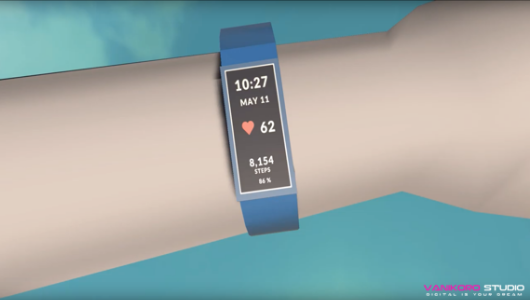 Figure 1: Quantified Self
Figure 1: Quantified Self - Pilot B - Open Field & Cattle Monitoring using UAVs (Drones): for challenging the disconnected use case, encrypted local storage and data restitution once the internet connection is restored. In this pilot, the AGILE gateway is loaded onto a drone in order to capture data remotely from sensors on the field and on animals.
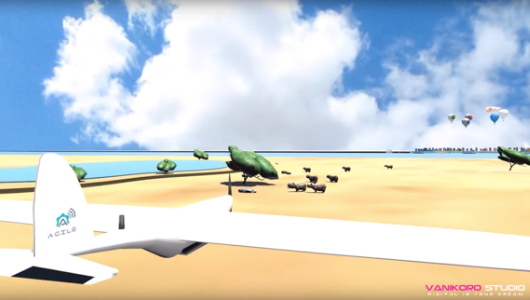 Figure 2: Open Field & Cattle Monitoring using UAVs (Drones)
Figure 2: Open Field & Cattle Monitoring using UAVs (Drones) - Pilot C - Air Quality & Pollution monitoring: for challenging multiple monitoring stations, with data processed and published to a cloud platform. In this case, the industrial version of the AGILE gateway is used, demonstrating the technical and business benefits of AGILE in industrial applications.
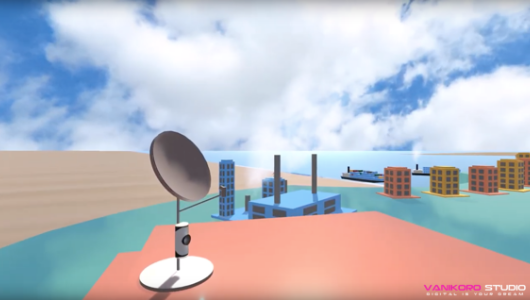 Figure 3: Air Quality & Pollution monitoring
Figure 3: Air Quality & Pollution monitoring - Pilot D - Enhanced Retail Services [8]: for challenging position localization through beacons, sensors and other wireless devices. By using AGILE, the pilot can offer an advanced shopping experience for the customers of the shop as well as offering improved management of the product stock.
 Figure 4: Retail Services
Figure 4: Retail Services - Pilot E - Port Area Monitoring for Public Safety: for testing communication protocols with radioactivity sensors, gas sensors, and water quality sensors, using data transmission in real time via a 3G/4G network.
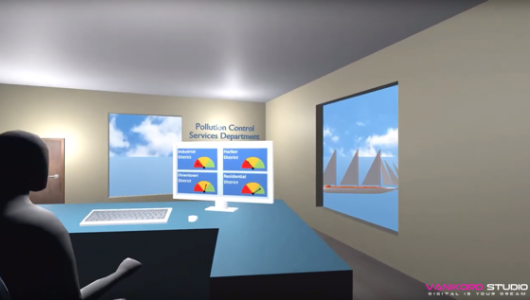 Figure 4: Port Area Monitoring for Public Safety
Figure 4: Port Area Monitoring for Public Safety
The pilots had an active role starting from the beginning of the project, providing a thorough list of requirements and KPIs, which acted as the baseline for the definition of functionalities of the different AGILE components. During the implementation phase, the pilots were granted access to the early versions of the software and contributed actively to the testing of each component. This process resulted in improvements to the quality of the software produced, validation of the pilot requirements, and verification of the proper integration with external systems. With the alpha and beta versions of the AGILE Software Stack, the pilots were able to perform deployments in real-world scenarios. The AGILE Software and Hardware was evaluated by real users in real operational conditions identifying issues (mainly of stability and performance), providing feature requests and enriching the documentation with the lessons learned and best practices for using AGILE.
These pilot projects represented the first set of proofs of concept. Following the pilots, the Open Calls Milestone represented the second validation step of the usability, including documentation, and openness of the AGILE-IoT platform. Sixteen projects were selected [9] [10], based on the interesting nature of the proposal, pertinence to the project, the challenged features, and coverage of the most IoT application domains (Consumer, Home, and Enterprise). The formal and informal feedback from the projects provided the team with both direction and affirmation of their approach. Here are some of the comments:
- Lack of documentation. The quality of the existing documentation was not criticized but the quantity which will guide the team in focusing on particular topics and theme to be covered
- Lack of documentation on extensibility. That the pilot projects requested more documentation on extensibility demonstrated the relevance of openness to this industry.
- Node-Red provided easy and effective prototyping. Test projects confirmed that offering a development environment supporting rapid-prototyping and keeping the customer interactions at a high level was the right approach (before 'digging down to the bare metal').
- The platform is easy to deploy. One of the open call winners was working with an IoT platform for the first time. Their feedback was very positive, especially in terms of providing a comprehensive feature set that was easy to adapt to their fish farm implementation [11]. They highly appreciated.
To conclude, we believe that the AGILE-IoT platform is more than a 3-year old project but still less than a commercial product. It defines an innovative vision of what a malleable IoT platform should be and initiates a community of IoT developers, architects and solution makers willing to openly collaborate around the open source project Eclipse AGAIL [12]. The project provides a governance model that balances the practicalities of providing common resources between IoT platform silos while not interfering with innovation in the field. If you appreciate this freedom as we in AGILE-IoT do, then we invite you to join this open source project: feel free to use it, improve it, share it, or, sell it in your products.
Acknowledgements
The authors would like to thank the AGILE team for their great work, Charalampos Doukas for initiating this project, and Susan Iwai for improving the readability of this article. We would also like to say thanks for the support of the Horizon 2020 programme of the European Union.
References and Further Readings
- Weyn, M. (2018). Trends in the IoT Landscape 2018 and how to streamline your IoT Product Development. [online] Slideshare.net. Available at: https://www.slideshare.net/MaartenWeyn1/trends-in-the-iot-landscape-2018-and-how-to-streamline-your-iot-product-development
- Zana Diaz, W. (2018). IoT Platform Company List 2017. [online] iIot-analytics.com. Available at: https://iot-analytics.com/iot-platforms-company-list-2017-update/
- Advancing IoT platforms interoperability. (2018). Gistrup: River Publishers. [online] Available at: https://iot-epi.eu/wp-content/uploads/2018/07/Advancing-IoT-Platform-Interoperability-2018-IoT-EPI.pdf
- Eclipse Foundation, (2018). Eclipse IoT | IoT development made simple. [online] Available at: https://iot.eclipse.org
- Adaptation: Wow, What a GREAT event!. (2017). [Blog] AGILE-IoT Blog. Available at: http://agile-iot.eu/2017/07/24/adaptation-wow-what-a-great-event/
- Adaptation: E-Camera project. (2017). [Blog] AGILE-IoT Blog. Available at: http://agile-iot.eu/2017/07/21/adaptation-e-camera-project/
- Menychtas, A., Doukas, C., Tsanakas, P. and Maglogiannis, I. (2017). A Versatile Architecture for Building IoT Quantified-Self Applications. In: 2017 IEEE 30th International Symposium on Computer-Based Medical Systems (CBMS). [online] Thessaloniki, Greece: IEEE, pp.500-505. Available at: https://ieeexplore.ieee.org/document/8104245
- Pilot D: Enhanced Retail Services using AGILE. (2017). [Blog] AGILE-IoT Blog. Available at: http://agile-iot.eu/2017/10/21/pilot-d-enhanced-retail-services-using-agile-video/
- Announcing the 8 winners of the Agile IoT Open Call #1. (2017). [Blog] AGILE-IoT Blog. Available at: http://agile-iot.eu/2017/12/15/announcing-the-8-winners-of-the-agile-iot-open-call-1/
- Announcing the 8 winners of the Agile IoT Open Call #2. (2018). [Blog] AGILE-IoT Blog. Available at: http://agile-iot.eu/2017/12/15/announcing-the-8-winners-of-the-agile-iot-open-call-2/
- Aquatic Project with Bioceanor. (2018). [Blog] AGILE-IoT Blog. Available at: http://agile-iot.eu/2018/08/25/aquatic-project-with-bioceanor/
- Eclipse Foundation, (2017). Eclipse AGAIL project. [online] Available at: http://eclipse.org/agail
Authors of Article
 |
Philippe Krief is the Research Relations Director of the Eclipse Foundation Europe. He received his Ph.D. in Computer Science from University Paris VIII, France in 1990. Before joining the Eclipse Foundation staff, he was Senior Architect on Embedded System developments, Eclipse committer, Agile development evangelist on the Rational Collaborative platform, and R&D Development Manager for IBM. He has a passion for Eclipse since its beginning, early 2000 when he was involved in the early versions based on VisualAge Micro Edition, which supported the development of embedded Java applications and cross-system development. Philippe is the dissemination and community development manager of the AGILE project (www.agile-iot.eu), co-founded by the Horizon 2020 programme of the European Union. |
|---|---|
 |
Massimo Vecchio received the MSc degree in Information Engineering (Magna cum Laude) from the University of Pisa, Pisa, and the Ph.D. degree in Computer Science and Engineering (with Doctor Europaeus mention) from the IMT Institute for Advanced Studies, Lucca, in 2005 and 2009, respectively. Starting from May 2015, he is an associate professor at the eCampus University, while in September 2017 he has also joined FBK CREATE-NET to coordinate the research activities of the OpenIoT Research Unit. He is a member of the editorial board of the Applied Soft Computing journal and of the newborn IEEE Internet of Things Magazine, besides being the managing editor of the IEEE IoT newsletters. Massimo is the project coordinator of the AGILE project (www.agile-iot.eu), co-founded by the Horizon 2020 programme of the European Union. |
 |
Andreas Menychtas is the CTO of BioAssist S.A., an SME that develops innovative commercial services in the fields of assisted living and homecare. Andreas holds a diploma of Electrical & Computer Engineering, MSc and Ph.D. from the National Technical University of Athens. He has participated as a researcher in several European and national research projects and initiatives in the domain of Distributed Systems, Software Modernization, eHealth, Smart Cities, and IoT, and the results of his work have appeared in over 70 scientific journals, conferences and book chapters. Andreas is leading the pilots work package of the AGILE project (www.agile-iot.eu), co-founded by the Horizon 2020 programme of the European Union. |
 |
Csaba Kiraly received both his MSc and Ph.D. from the Budapest University of Technology and Economics. He is currently a senior researcher at the Bruno Kessler Foundation, Trento. His main research interests are IoT systems and protocol stacks, P2P systems, Privacy Enhancing Technologies, and Multi-hop Wireless and Sensor Networks. Csaba is a member of IEEE ComSoc and an Eclipse committer. He is the author of more than 40 scientific publications in international journals and conferences, several of which received IEEE Best Paper and Best Demo awards. Csaba is the technical lead of the AGILE project (www.agile-iot.eu), co-founded by the Horizon 2020 programme of the European Union. |
 |
| 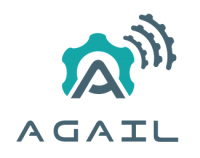 |
|---|---|---|
| This project has received funding from the European Union's Horizon 2020 research and innovation programme under grant agreement No 688088 | ||
